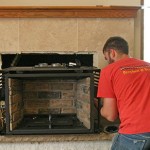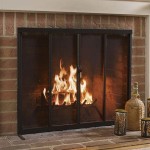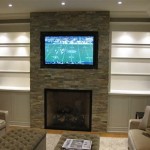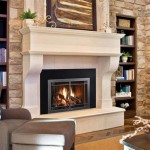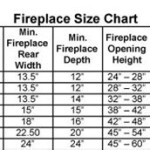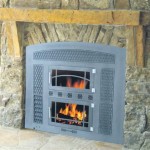Open Fireplace Ideas: A Comprehensive Guide
Open fireplaces, a traditional focal point in many homes, offer a unique blend of warmth, ambiance, and visual appeal. The crackling sound of burning wood, the mesmerizing dance of the flames, and the radiant heat all contribute to a sense of comfort and relaxation. However, designing or updating an open fireplace requires careful consideration of various factors, including safety, efficiency, aesthetics, and compliance with local building codes. This article explores a range of open fireplace ideas, providing insights into design elements, material selections, and best practices for achieving a functional and aesthetically pleasing fireplace.
The allure of an open fireplace stems from its historical significance as a central source of heat and gathering place. Over centuries, fireplace designs have evolved from simple hearths to sophisticated architectural features. Modern open fireplaces can be tailored to suit a wide array of architectural styles, from rustic and traditional to contemporary and minimalist. The key to a successful open fireplace design lies in balancing aesthetic appeal with practical considerations such as ventilation, fire safety, and heat output.
Enhancing Aesthetics Through Material Selection
The choice of materials significantly impacts the overall aesthetic of an open fireplace. A wide variety of materials can be used, each offering a distinct look and feel. Brick, stone, concrete, and metal are common choices, and the selection should complement the existing architectural style of the home.
Brick is a classic material that evokes a sense of tradition and warmth. It is available in various colors, textures, and sizes, allowing for customization to match different design preferences. Brick fireplaces often feature intricate patterns and decorative elements, adding visual interest and character to a room. Reclaimed brick, in particular, can add a rustic and historical touch.
Stone fireplaces offer a more natural and rugged aesthetic. Natural stone, such as granite, limestone, or slate, provides a unique and textured surface that enhances the visual appeal of the fireplace. Stone fireplaces are often incorporated into homes with a rustic or country-style design. The irregular shapes and textures of natural stone create a visually striking focal point.
Concrete fireplaces are becoming increasingly popular in contemporary homes. Concrete offers a sleek and minimalist aesthetic that complements modern design principles. It can be molded into various shapes and sizes, allowing for flexibility in design. Concrete fireplaces can also be stained or polished to achieve different finishes, enhancing their versatility.
Metal fireplaces, typically made of steel or cast iron, offer a more industrial and modern aesthetic. Metal fireplaces are often characterized by their clean lines and minimalist design. They can be used as a focal point in contemporary homes or incorporated into lofts and other industrial-style spaces. The durability and heat-resistant properties of metal make it a suitable material for open fireplaces.
Beyond the primary material, decorative elements such as mantels, surrounds, and hearths can further enhance the aesthetic appeal of an open fireplace. Mantels can be made of wood, stone, or metal and serve as a decorative shelf above the fireplace. Surrounds, which frame the firebox, can be made of various materials and add visual interest to the fireplace. Hearths, the non-combustible area in front of the fireplace, protect the floor from sparks and embers and can be made of brick, stone, or tile.
Optimizing Functionality and Efficiency
While aesthetics are important, the functionality and efficiency of an open fireplace are equally crucial. Open fireplaces are known for their relatively low efficiency compared to closed fireplaces or stoves, as a significant amount of heat is lost up the chimney. However, several design strategies can be implemented to improve efficiency and maximize heat output.
Proper sizing of the firebox is essential for efficient combustion. A firebox that is too large will allow too much air to enter, leading to incomplete combustion and heat loss. A firebox that is too small will restrict airflow, resulting in smoky fires and reduced heat output. The size of the firebox should be proportionate to the size of the room and the intended use of the fireplace.
The design of the firebox also plays a crucial role in efficiency. A tapered firebox with angled sides will reflect more heat into the room. Additionally, incorporating a smoke shelf or smoke chamber above the firebox can help to improve draft and prevent downdrafts. A well-designed smoke shelf will also help to reduce the amount of creosote buildup in the chimney.
The chimney is a critical component of an open fireplace system. A properly sized and insulated chimney is essential for creating adequate draft and preventing heat loss. The chimney should be tall enough to extend above the roofline and any nearby obstructions, ensuring proper airflow. A chimney liner made of stainless steel or clay tile will help to protect the chimney from the corrosive effects of flue gases.
Air supply is another important factor in fireplace efficiency. Open fireplaces require a significant amount of air to support combustion. Without an adequate air supply, the fire will burn inefficiently and produce excessive smoke. Ideally, the fireplace should have a dedicated air supply duct connected to the outside, providing a constant source of fresh air. This is particularly important in tightly sealed homes where air infiltration is limited.
The use of a fireplace grate can also improve efficiency by allowing air to circulate beneath the fire. A grate elevates the wood, creating a space for air to flow freely and promote more complete combustion. Fireplace grates are available in various designs and materials, and the choice should be based on the size of the firebox and the intended use of the fireplace.
Ensuring Safety and Compliance
Safety is paramount when designing and operating an open fireplace. Open fireplaces pose certain risks, including the potential for fire spread, carbon monoxide poisoning, and burns. Adhering to safety guidelines and building codes is essential for minimizing these risks.
Proper clearance from combustible materials is crucial for preventing fire spread. The fireplace should be located at a safe distance from walls, furniture, and other flammable items. Building codes typically specify minimum clearance requirements for fireplaces, which vary depending on the type of construction and the materials used. A non-combustible hearth extension is required in front of the fireplace to protect the floor from sparks and embers.
Carbon monoxide (CO) is a colorless, odorless gas that is produced during combustion. Inadequate ventilation can lead to CO buildup in the home, posing a serious health hazard. It is essential to install CO detectors in the vicinity of the fireplace and to ensure that the chimney is properly maintained and free from obstructions. Regular chimney inspections and cleaning are crucial for preventing CO poisoning.
Fire screens or doors are recommended for open fireplaces to prevent sparks and embers from escaping the firebox. Fire screens are made of mesh or metal and cover the opening of the fireplace, containing any sparks or embers that may be ejected. Fire doors provide an additional layer of protection and can also help to improve efficiency by reducing airflow through the fireplace opening.
The proper storage and handling of firewood are also important safety considerations. Firewood should be stored in a dry, well-ventilated area away from the home to prevent insect infestations and mold growth. Never store firewood directly against the house, as this can create a fire hazard. When handling firewood, wear gloves to protect your hands from splinters and sap.
Local building codes and regulations govern the construction and installation of fireplaces. Before building or renovating a fireplace, it is essential to consult with local building officials to ensure compliance with all applicable codes. These codes address various aspects of fireplace design, including chimney height, firebox size, clearance requirements, and ventilation. Failure to comply with building codes can result in fines and delays.
Furthermore, it is essential to maintain the fireplace and chimney regularly. This includes inspecting the chimney for cracks, damage, and creosote buildup. Creosote is a flammable substance that accumulates in the chimney over time and can ignite, causing a chimney fire. Professional chimney sweeps can inspect and clean chimneys to remove creosote and other debris. Regular maintenance will ensure that the fireplace operates safely and efficiently for years to come.
Designing and maintaining an open fireplace requires a comprehensive understanding of aesthetics, functionality, and safety considerations. By carefully selecting materials, optimizing design elements, and adhering to safety guidelines, it is possible to create a beautiful and functional open fireplace that enhances the ambiance and comfort of any home.

50 Fireplace Ideas For A Warm And Cozy Home In 2025

Open Fireplace Designs Fire Place Wood Burning Fires

7 Stylish Ideas For Your Empty Fireplace Modern Cosy Looks

12 Empty Fireplace Ideas How To Style An Unused

Fireplace Décor Ideas 15 For A Stylish Central Feature O

5 Fireplace Design Ideas That Will Enhance Your Home Vertical Chimney Care

Contemporary Fireplace Surrounds And Mantels Ideas Direct Fireplaces

Beautiful European Cottage Fireplace Makeover Ideas Inspiration Open Doors Hearts

40 Fabulous Fireplace Design Ideas For Any Budget Or Style

Living Room Ideas Designs Trends And S


